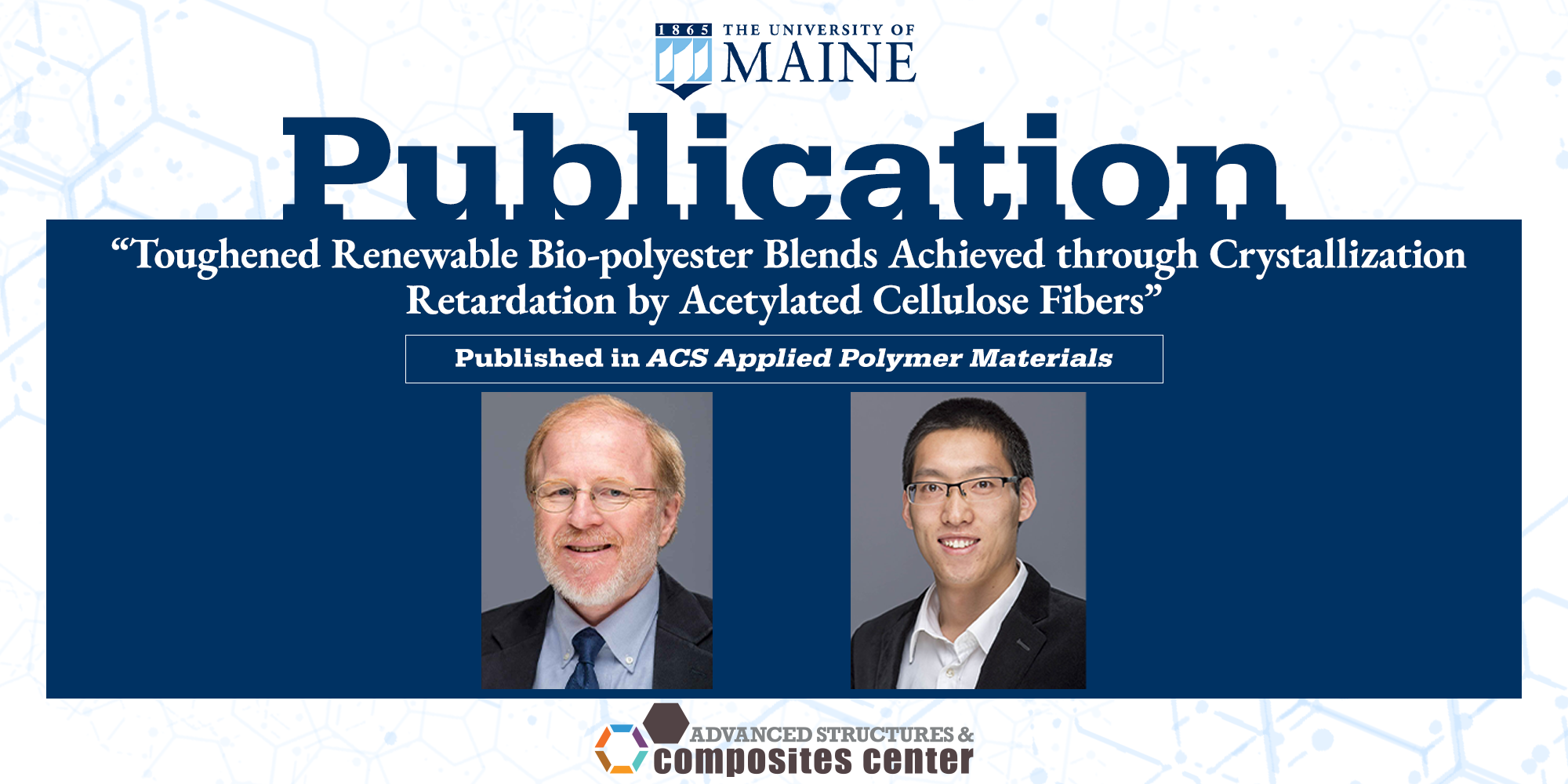
Article by Wang and Gardner published in ACS Applied Polymer Materials
Orono, Maine — An article by ASCC researchers Lu Wang and Doug Gardner on the acetylation of cellulose fibers was recently published in ACS Applied Polymer Materials. The paper was co-authored with researchers from the Department of Forest BioMaterials at North Carolina University.
Finding alternatives to petroleum-derived plastics will help reduce CO2 emissions in the composites industry. Bioplastics and biomass fibers are promising alternatives. In this study, ASCC researchers explore partially acetylated cellulose in polylactic acid (PLA) and other plastic composites. Acetylation is a technique to make cellulose fibers more compatible within a polymer matrix. Partial acetylation imparts hydrophobicity and potential compatibility with the polymer matrix while maintaining some of the natural attributes of cellulose, such as high crystallinity, stiffness, and strength.
Results showed that acetylated cellulose had a crystal retardation effect on P3HB within the polymer matrix. A toughening behavior was also observed in the acetylated samples, which is the first time that acetylated cellulose has been shown to increase the toughness of PLA/P3HB composites. Future work could open the door for broader uses of PLA and bioplastics, especially in applications such as 3D printing.
Toughened Renewable Bio-polyester Blends Achieved through Crystallization Retardation by Acetylated Cellulose Fibers
Authors: A. Griffin Miller, Lu Wang, Douglas Gardner, Richard A. Venditti, Sunkyu Park
ACS Applied Polymer Materials (2022)
Full Article
Received: 29 September 2022 / Accepted: 16 December 2022 / Published: 31 December 2022
Abstract
Acetylation was explored as a technique to make cellulose fibers more compatible within a poly(lactic acid)/poly(3-hydroxybutyrate) polymer matrix. Acetylation was performed to degrees of substitutions 1.74, 2.52, and 2.8, and fibers were used in loadings from 0–20% by weight. Results showed no tensile strength improvements due to poor dispersion and fiber size reduction with fiber addition, but there were increases in modulus in the non-acetylated fiber sample and fully acetylated [degree of substitution (DS) 2.8] fiber samples. Composites containing modified fibers showed an increase in strain at break by as much as 200% at low loading levels. Acetylated cellulose acted as a nucleation retardant, while unmodified cellulose fibers acted as a nucleating agent. Results indicated the importance of fiber size, fiber, dispersion, and fiber–polymer interactions for final properties. Acetylated fiber reinforcement showed some promise for increasing maximum strain and compatibility of composites, which could allow for future investigations into filler chemistry–final property relationships, especially in applications like 3D printing where increased toughness is desired for some polymers.
Keywords: esterification; bio-based composites; interfacial compatibility; nucleation; rheology; crystallization
Article by Wang and Gardner published in ACS Applied Polymer Materials
Contact: Katelin Moody, katelin.moody@maine.edu
